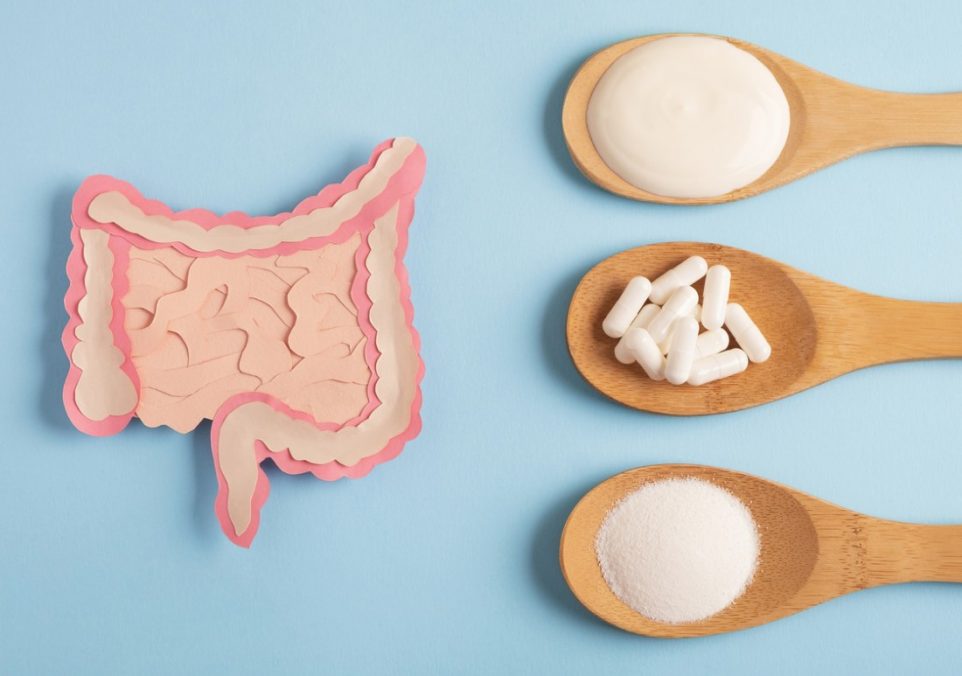Can You Take Prebiotics and Probiotics Together?

Prebiotics are fibrous compounds that the human body cannot digest. They serve as food for probiotics, which are live beneficial bacteria that reside in the gut. These microorganisms play a crucial role in maintaining gut health, aiding digestion, and supporting the immune system. According to ongoing research on gut health, combining prebiotics and probiotics can have potential advantages, but there are some important things to keep in mind.
What Are Prebiotics?
Prebiotics are essentially the nourishment required by probiotics to thrive and exert their health benefits. You can find these non-digestible in many foods, including onions, garlic, bananas, asparagus, and whole grains. By passing undigested through the upper part of the gastrointestinal tract, prebiotics reach the colon, where they promote the growth and activity of advantageous bacteria.
Understanding the importance of prebiotics is crucial for those looking to enhance their gut microbiota through supplementation. It’s not only about providing your gut with beneficial bacteria but also ensuring that these microorganisms have the necessary resources to colonize and function effectively.
What Are Probiotics?
Probiotics are beneficial bacteria that are similar to the naturally occurring microorganisms found in the human gut, also known as the gut microbiota. They play a pivotal role in digestive health, supporting the breakdown of food, absorption of nutrients, and the functioning of the immune system. Beyond their digestive benefits, probiotics are also associated with other health outcomes such as improved mental health, reduced inflammation, and enhanced skin condition.
As supplements, probiotics come in various forms, including capsules, powders, and liquids, and they contain different strains and quantities of bacteria. Each strain has specific properties and health benefits, so it’s important to choose a probiotic supplement that fits one’s individual health needs.
For example, certain probiotics for women contain specifically designed strains that target the unique needs of the female body, including supporting vaginal flora and potentially reducing the risk of urinary tract infections. Additionally, prenatal probiotics are formulated to support a balanced gut microbiome during pregnancy.
By understanding what probiotics are and their significant role within the gut you can make informed decisions about combining these with prebiotics for enhanced gut health. The goal is to achieve a balanced and diverse microbiota, which is a cornerstone of overall well-being.
Can You Take Prebiotics and Probiotics Together?
Taking prebiotics and probiotics together is not only safe but can be particularly beneficial for your gut health. This combination, also known as synbiotics, can enhance the survivability and efficacy of probiotics by ensuring that these beneficial bacteria have a source of nourishment upon reaching the gut. Prebiotics can stimulate the growth and activity of probiotics, making this combination a powerful tool for maintaining a healthy and balanced gut microbiome.
When selecting probiotics, it’s important to look for quality products that contain live and active cultures. Dosage and timing do matter when it comes to taking prebiotics and probiotics. It is generally recommended to follow the instructions provided by the supplement manufacturer or seek advice from a healthcare professional.
Some may suggest taking them at the same time, while others may recommend spacing them out throughout the day. Regardless, the combination of these two can lead to improvements in digestive health, enhanced immune function, and for women, specific benefits in maintaining vaginal and urinary tract health.
Incorporating both prebiotics and probiotics into your diet can create a synergistic effect that supports a healthy digestive tract and overall well-being. Whether you’re consuming them through natural food sources or supplements, this dynamic duo works together to keep your gut flora thriving.
Foods Rich in Prebiotics and Probiotics
To maximize the benefits of these gut-supporting substances, it’s important to include a variety of foods rich in both prebiotics and probiotics in one’s diet. For a robust intake of prebiotics, one should turn to foods high in dietary fibers that escape digestion and serve as fuel for the beneficial bacteria residing in the gut.
Examples include chicory root, Jerusalem artichoke, dandelion greens, garlic, onions, leeks, asparagus, bananas, barley, oats, apples, and flaxseeds. These foods contain compounds such as inulin and fructooligosaccharides, which aid in the proliferation of probiotics in the colon.
To bolster the population of probiotics in the gut, fermented foods are an excellent choice. Yogurt and kefir are widely recognized for their probiotic content and are especially beneficial when they contain live and active cultures. Other fermented delicacies such as sauerkraut, kimchi, miso, tempeh, and pickles contribute a variety of bacterial strains to the gut ecosystem.
It’s crucial to note that not all fermented foods contain live probiotics, so always check packaging. Pairing prebiotic-rich foods with probiotic-rich foods can amplify the beneficial effects on gut health. A breakfast of yogurt with a banana or a salad with asparagus and a side of sauerkraut are simple ways to combine these two important dietary components.
Building a Stronger You
Supplement Institute is the fruit of extensive online publishing experience, spanning the breadth of SEO strategies to the nuances of paid advertisements. Our journey, marked by significant achievements and learning moments, inspires our core mission: to empower our readers with an abundance of information. By sharing insights and key learnings, we aim to provide you with the knowledge needed to navigate the complex world of supplements, helping you make well-informed decisions for your health and well-being. Welcome to Supplement Institute, where information is your greatest supplement.